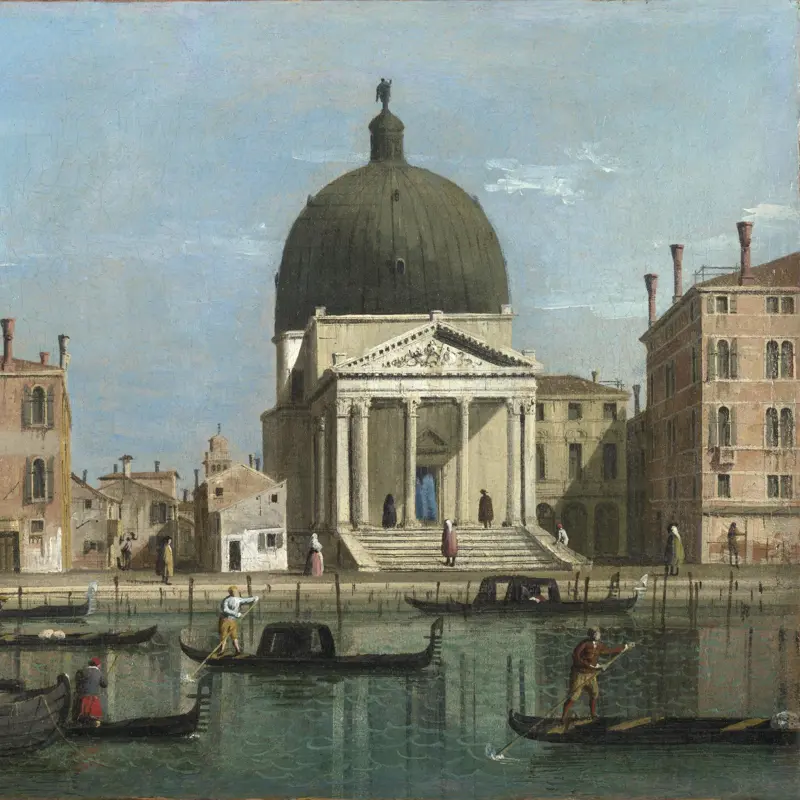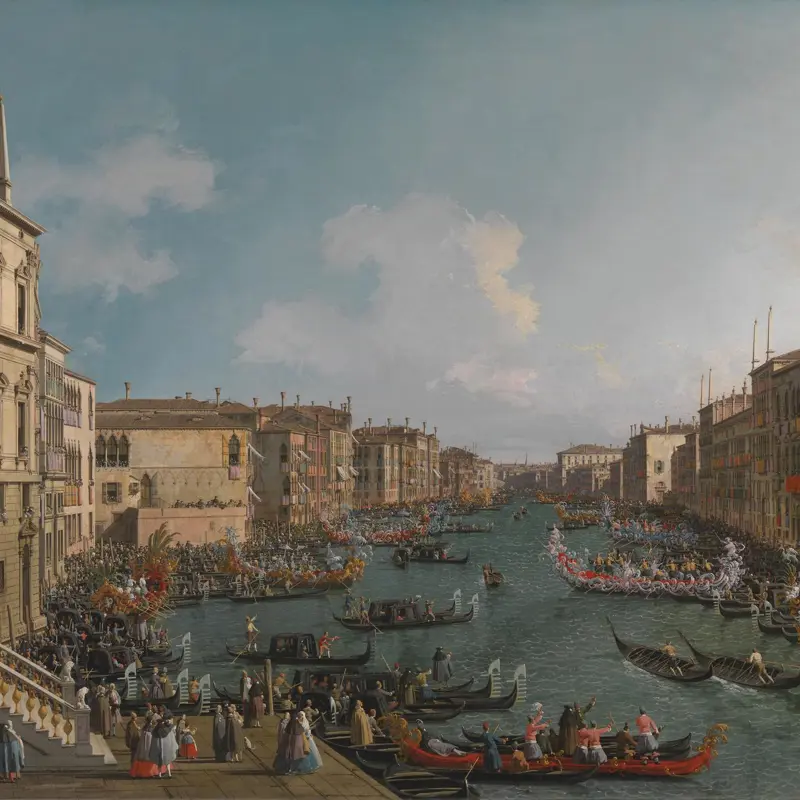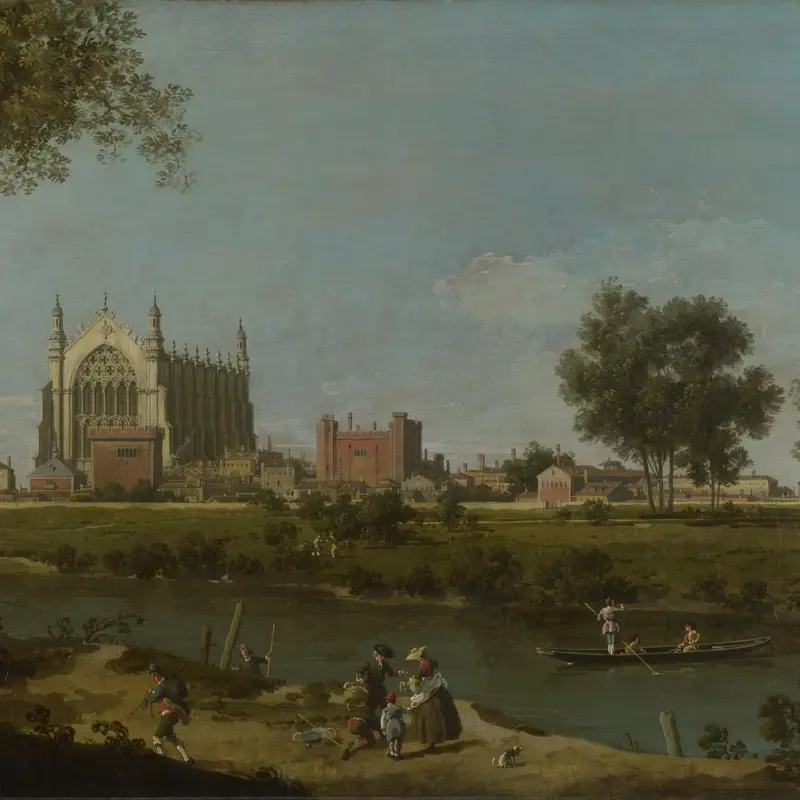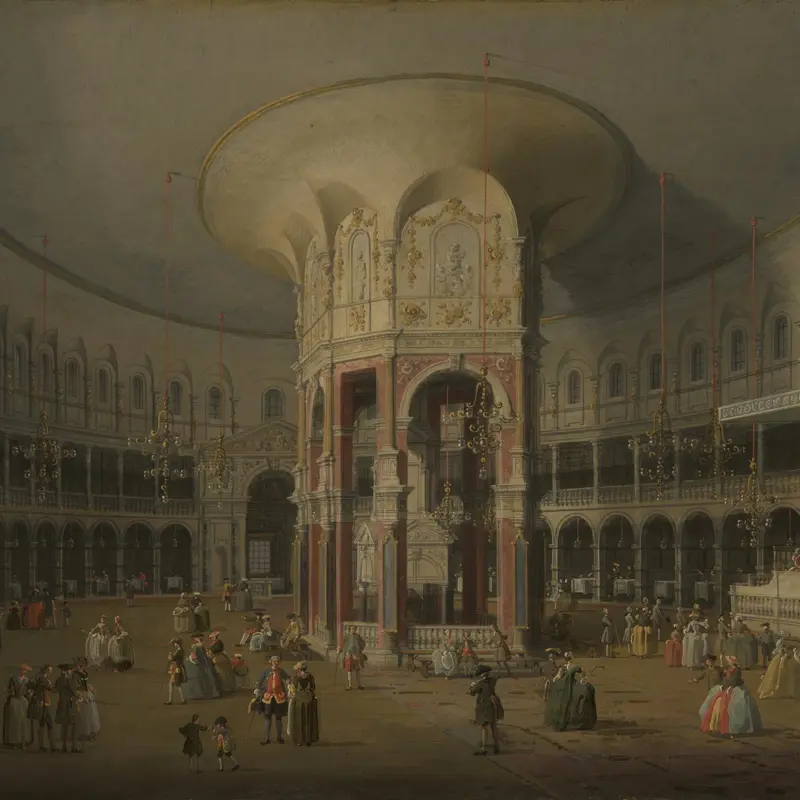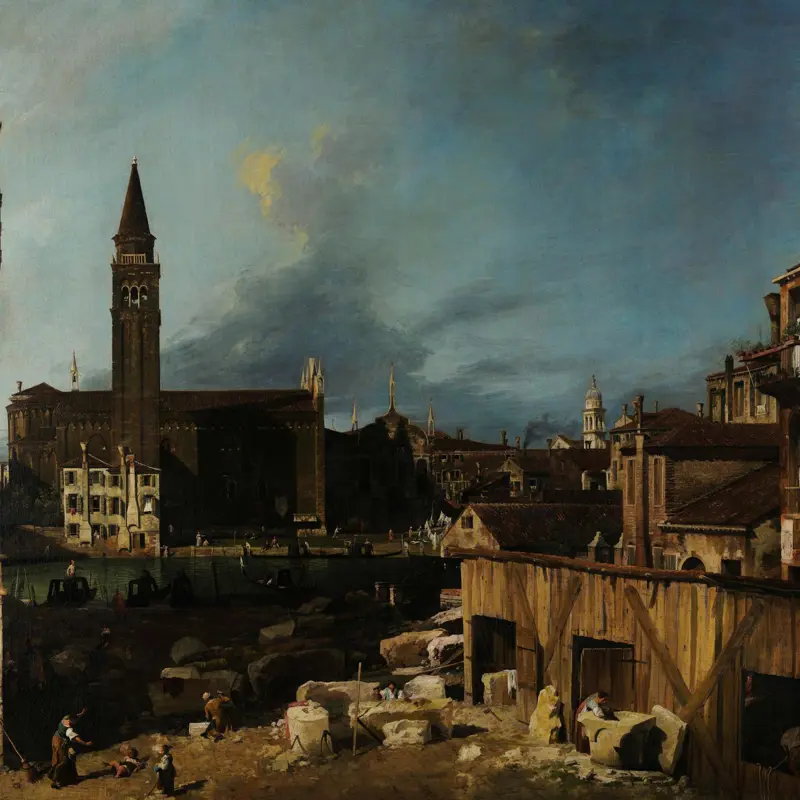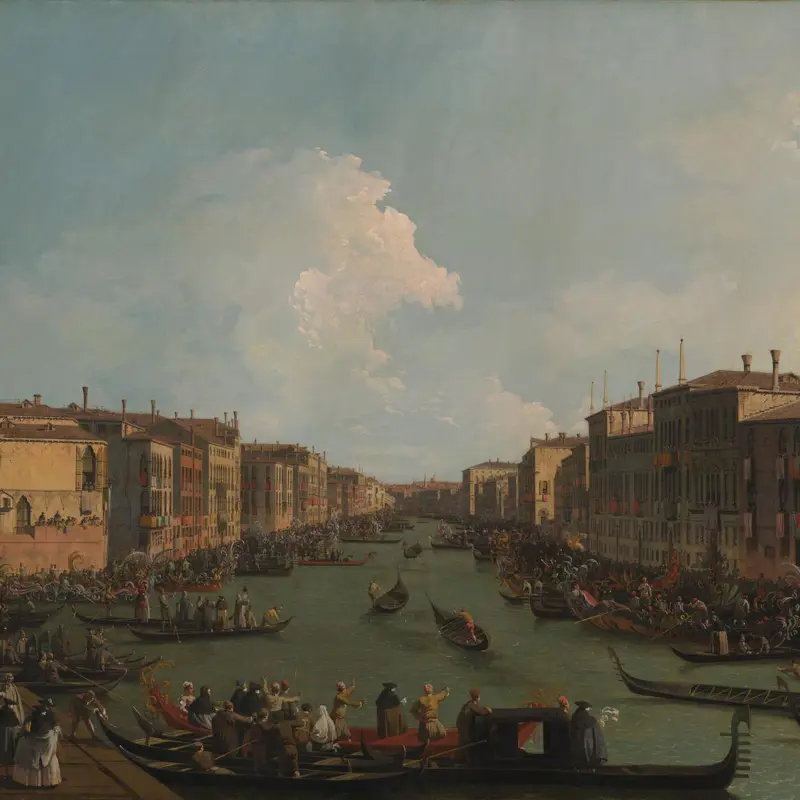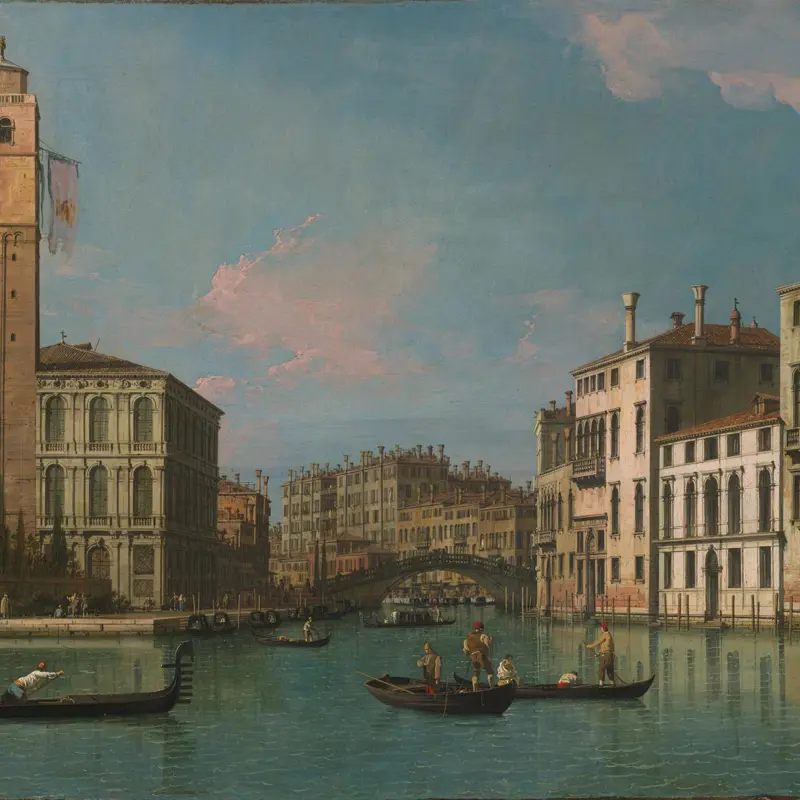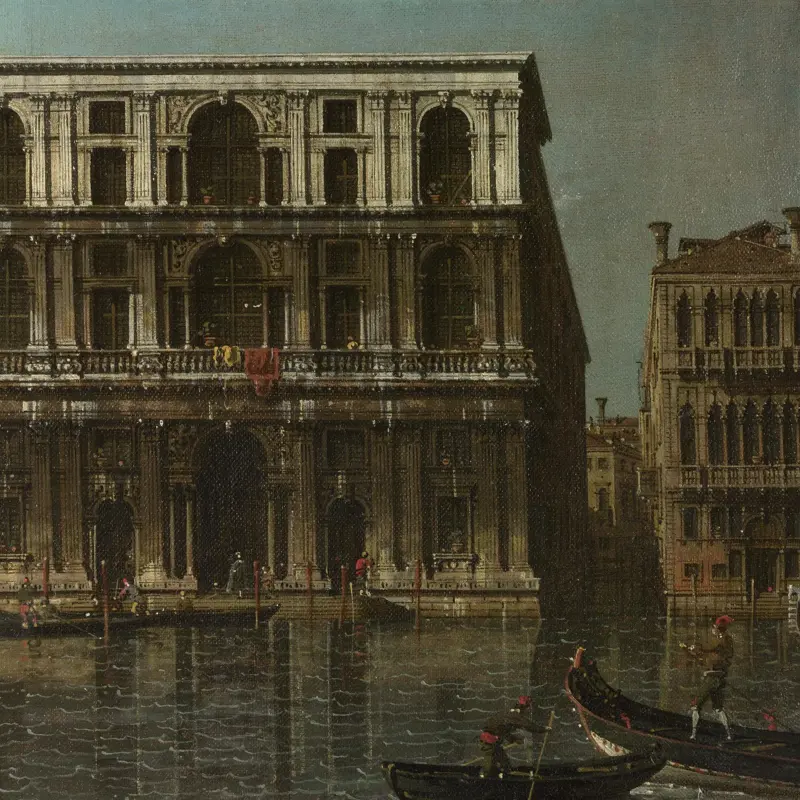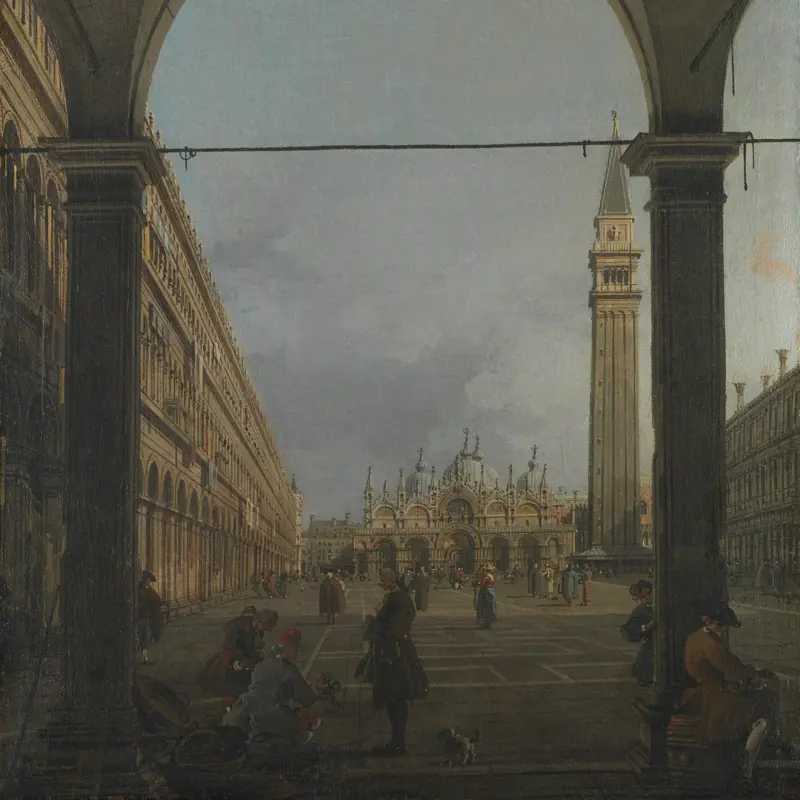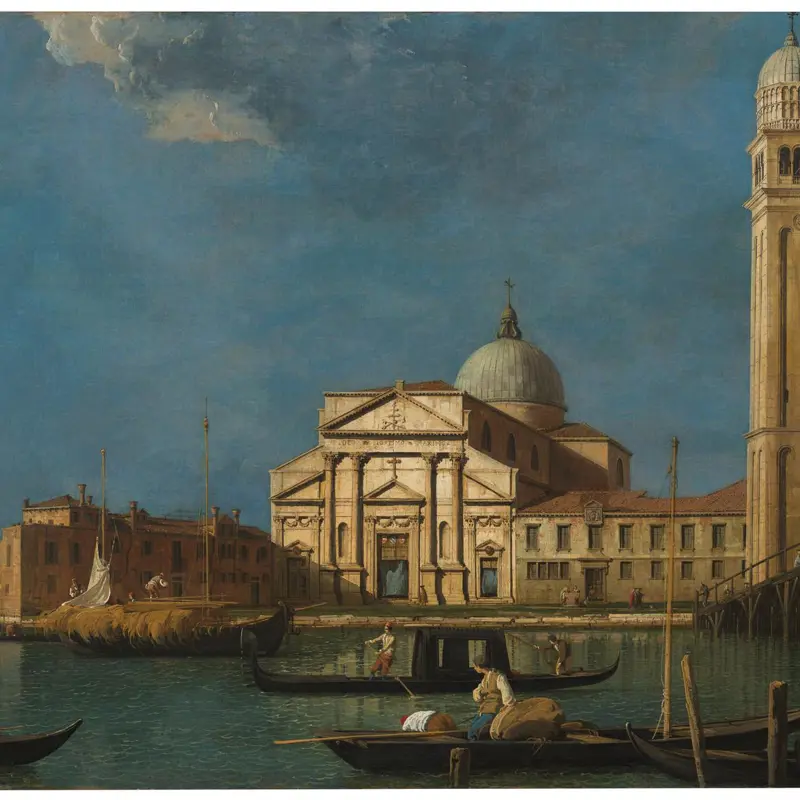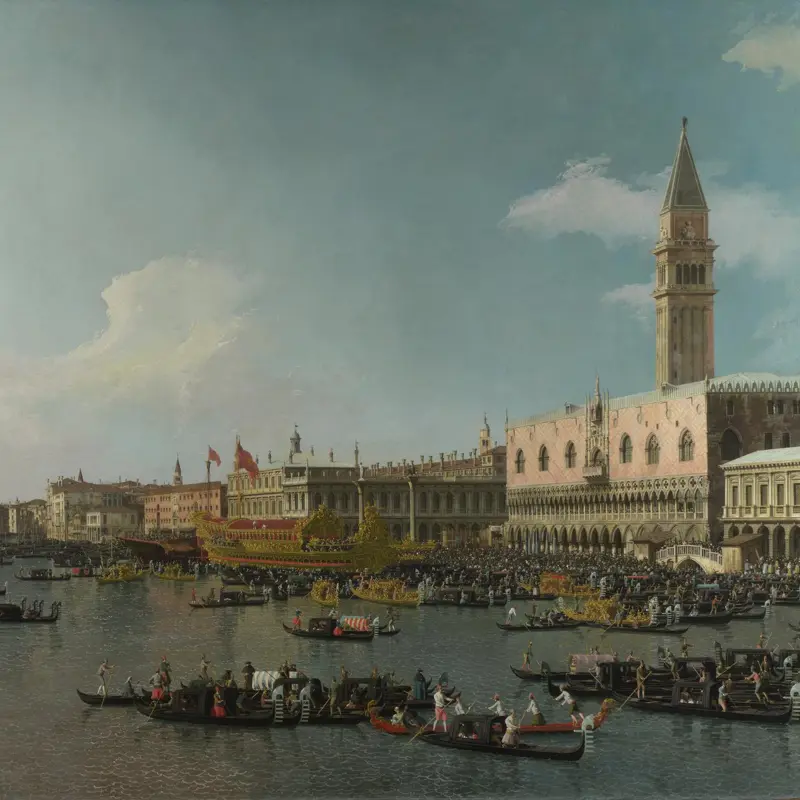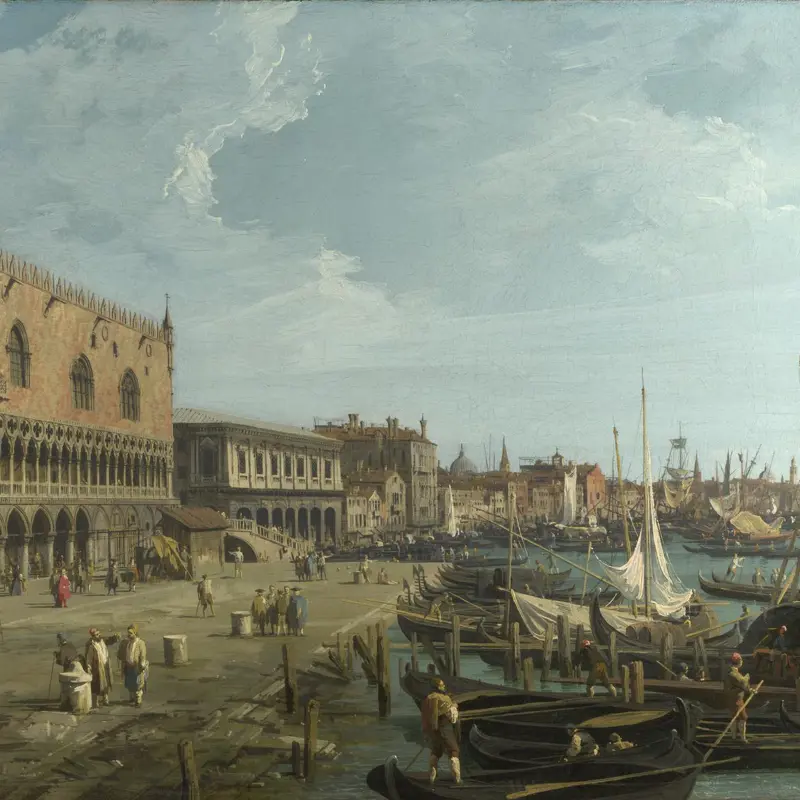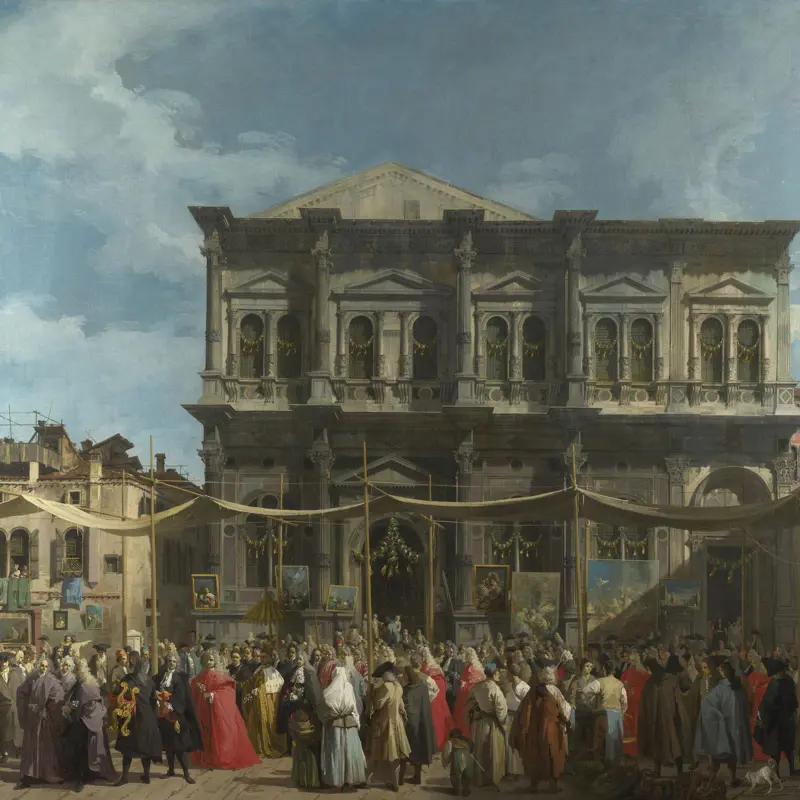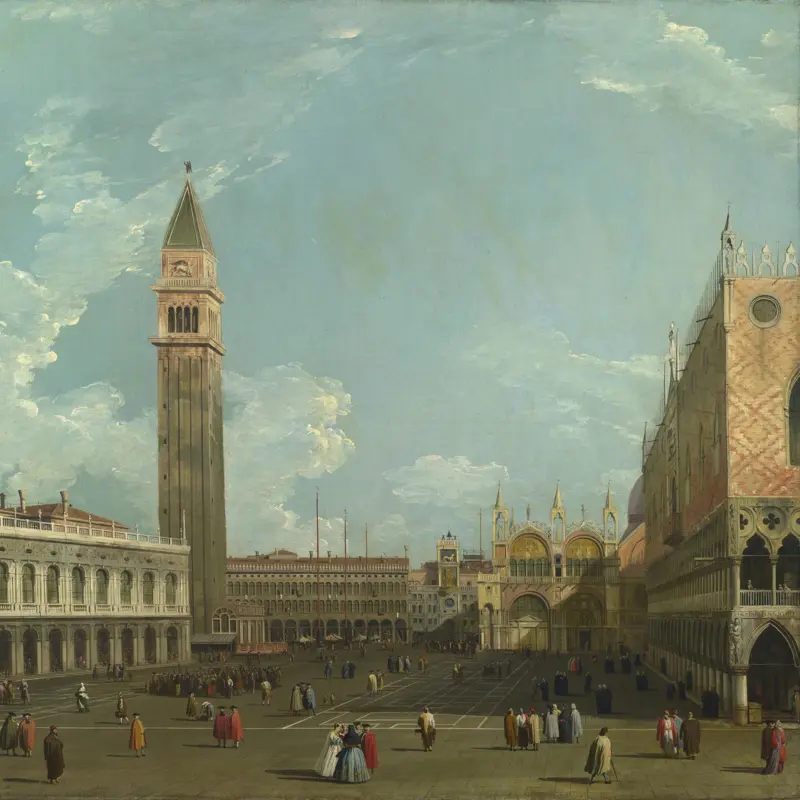Follower of Canaletto, 'Venice: The Grand Canal facing Santa Croce', after 1738
About the work
Overview
Antonio Visentini engraved 38 paintings by Canaletto in his celebrated Urbis Venetiarum Prospectus, published in 1742 – this popular view was one of them. The collection of prints increased the artist’s fame and spread his work across Europe. This composition was widely reproduced in Canaletto’s studio, including by his precociously talented nephew, Bernardo Bellotto (whose version of this scene is in our collection).
Incidental details bring the scene to life. A fisherman is moored up to the right and gondoliers cross the Grand Canal. Along the quay people stroll past the pinkish facade of the church of Santa Croce (demolished in 1810) and head towards the domed church of San Simeone Piccolo, which can be seen up close in the picture painted as a companion to this one.
The inscription ‘original del Canaletto’ was uncovered on the back of this picture, but the painting lacks his refinement – it has clearly been painted in his style.
Key facts
Details
- Full title
- Venice: Upper Reaches of the Grand Canal facing Santa Croce
- Artist
- Follower of Canaletto
- Artist dates
- 1697 - 1768
- Part of the series
- Two Views across the Grand Canal
- Date made
- after 1738
- Medium and support
- oil on canvas
- Dimensions
- 38.8 × 46.3 cm
- Acquisition credit
- Bought, 1860
- Inventory number
- NG1886
- Location
- Not on display
- Collection
- Main Collection
Provenance
Additional information
Text extracted from the ‘Provenance’ section of the catalogue entry in Michael Levey, ‘National Gallery Catalogues: The Seventeenth and Eighteenth Century Italian Schools’, London 1986; for further information, see the full catalogue entry.
Bibliography
-
1956Levey, Michael, National Gallery Catalogues: The Eighteenth Century Italian Schools, London 1956
-
1986Levey, Michael, National Gallery Catalogues: The Seventeenth and Eighteenth Century Italian Schools, London 1986
-
2001
C. Baker and T. Henry, The National Gallery: Complete Illustrated Catalogue, London 2001
About this record
If you know more about this work or have spotted an error, please contact us. Please note that exhibition histories are listed from 2009 onwards. Bibliographies may not be complete; more comprehensive information is available in the National Gallery Library.
Images
About the series: Two Views across the Grand Canal
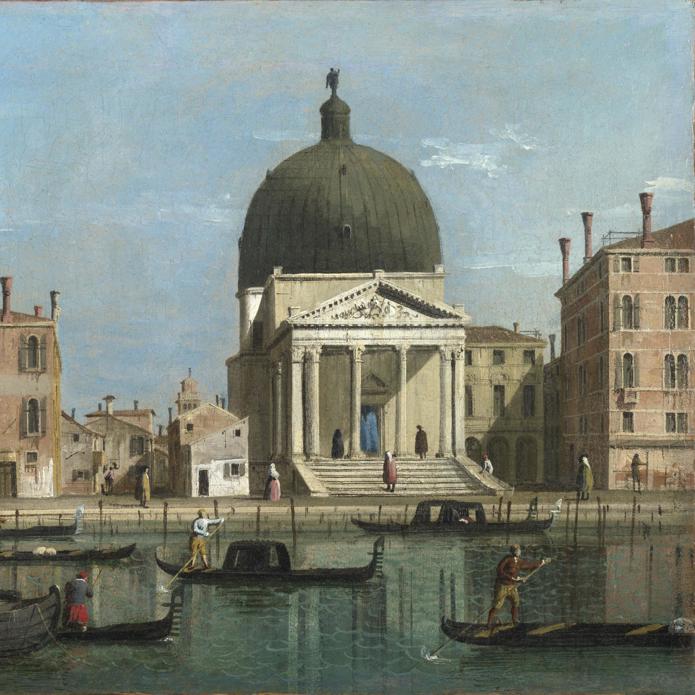
Overview
We don’t know who painted Venice: San Simeone Piccolo and Venice: The Grand Canal facing Santa Croce, though it’s likely they were made by a contemporary follower of Canaletto, eager to take advantage of his success by producing small-scale copies of his work, or by one of Canaletto’s pupils as a studio copy.
Inscriptions on the back of each canvas, uncovered during conservation work, state they are genuine works by Canaletto. These were presumably added by an unscrupulous artist or owner: the paintings have clearly been produced by someone imitating Canaletto’s style, though rather crudely. Pictures like these formed part of a burgeoning market in Venice during the 1730s and 1740s, enabling visitors who couldn't afford Canaletto’s high price tag to take home a souvenir from their travels.

